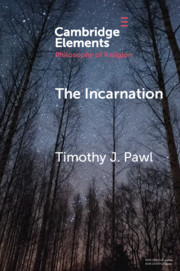Element contents
The Incarnation
Published online by Cambridge University Press: 29 September 2020
Summary
- Type
- Element
- Information
- Online ISBN: 9781108558341Publisher: Cambridge University PressPrint publication: 22 October 2020
References
- 12
- Cited by

